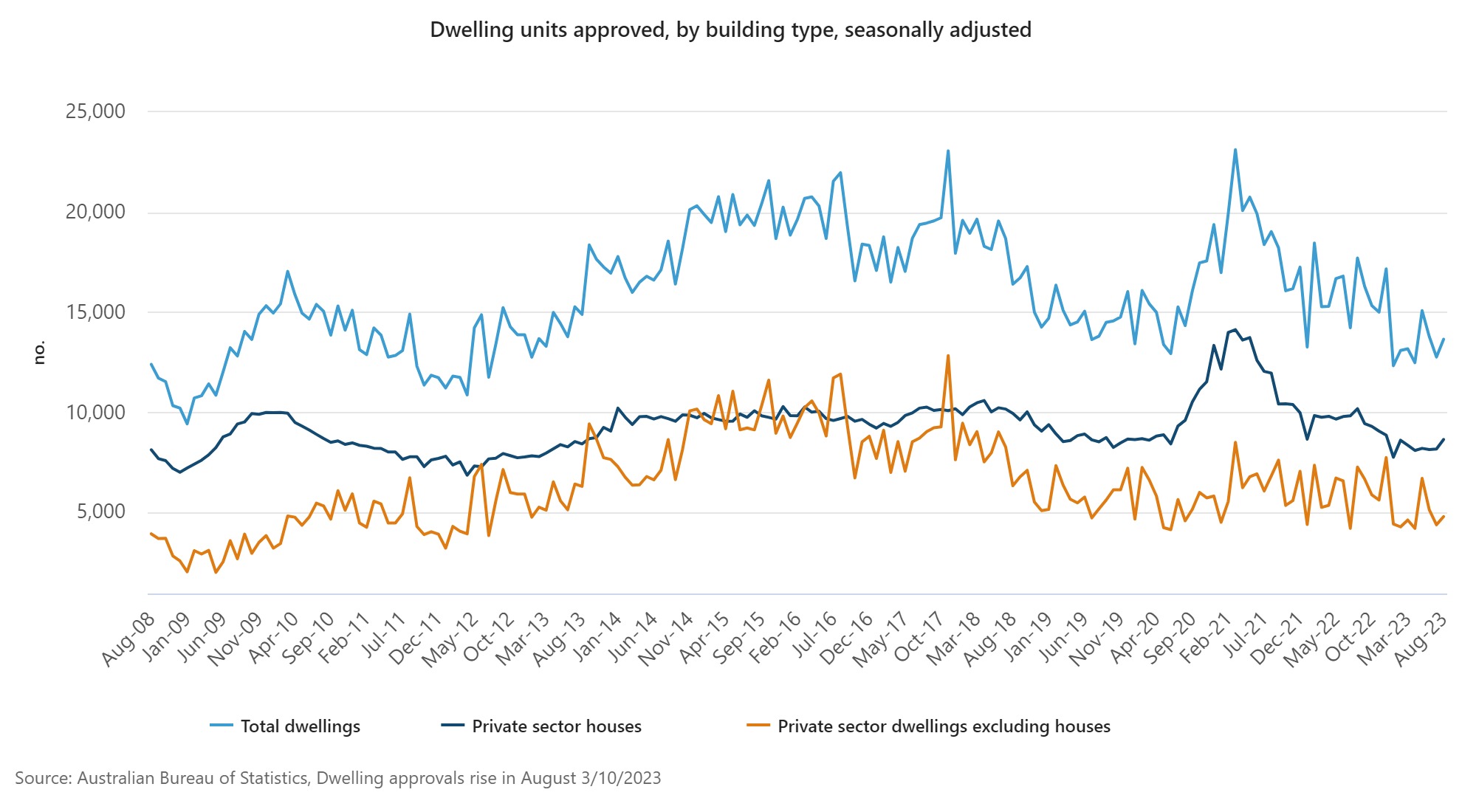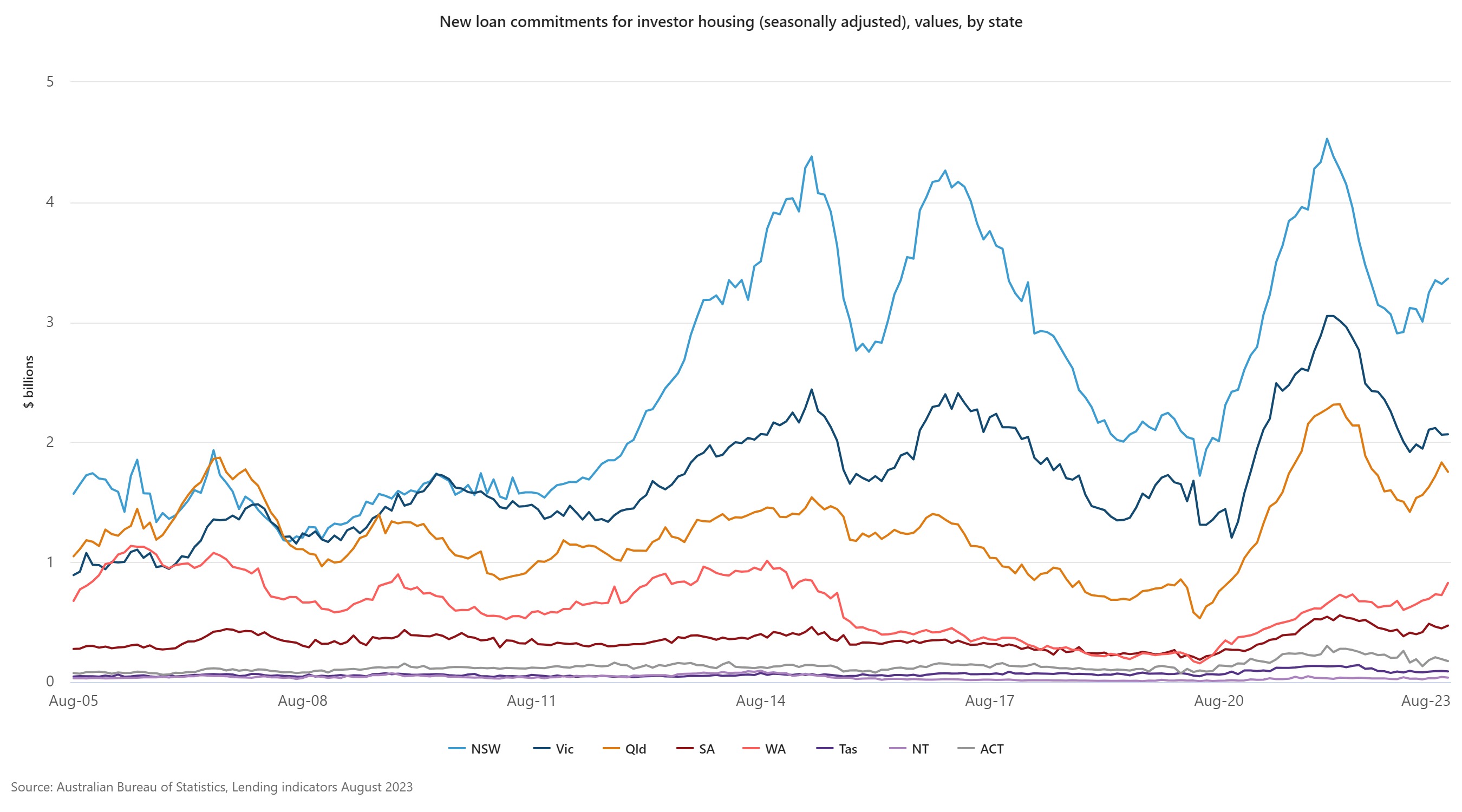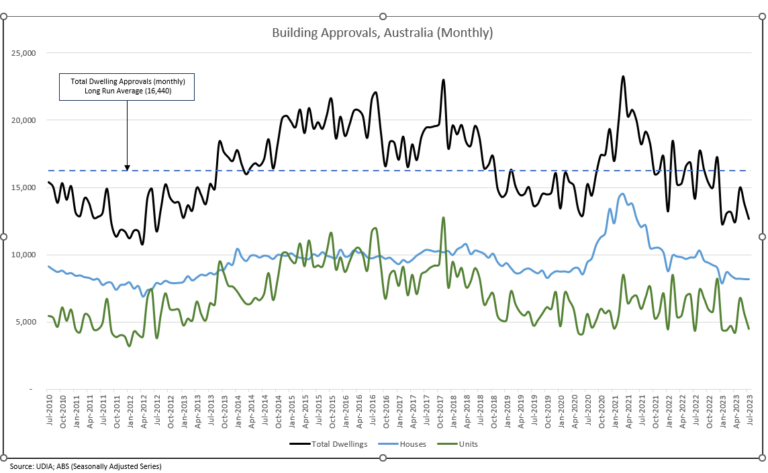

Australia's housing crisis is deepening, and the latest data from the Australian Bureau of Statistics suggests that the federal government's goal of building 1.2 million new homes in five years is under threat.
Despite an uptick in the latest monthly data, building approvals are still well below the long-term average.
While residential building approvals rose 7% in August, it followed steep drops in July (-8.1%) and June (-7.9%).
“It’s encouraging to see a monthly rise in approvals but it’s still well down on a year ago,” said Kent Leicester (pictured above left), managing director of Queensland property developer KDL Property Group.
“It highlights the need to take action to assist councils and infrastructure authorities with quickening the approval processes,” Leicester said. “Councils and water authorities need external assistance to reduce the backlog in getting key residential housing projects approved to tackle the nation’s housing crisis.”

To address the housing crisis, the federal government has developed a 10-year National Housing and Homelessness Plan to improve access to safe and affordable housing.
The plan includes the Housing Australia Future Fund (HAFF), which will create 30,000 new social and affordable homes in its first five years, and the Housing Accord, which aims to deliver 1.2 million well-located homes between 2024 and 2029.
To achieve this, an average of 240,000 net new homes will need to be constructed every year in the five-year period but the figure is already forecasted to be well behind.
Leicester said despite these “ambitious plans” to boost housing supply, including new and affordable social homes, slow approvals made these plans difficult to achieve unless they receive more support to assess applications.
“The authorities we deal with for our projects in southeast Queensland are already stretched and under-resourced, and as a result it has been taking a long time to get everything over the line,” Leicester said.
“As developers, we fully understand and empathise with the difficulties they have, and we need to find a way to help them process these applications.
”We have residential sites ready to be added to the housing market, but the land is caught up in approval roadblocks.”
The data also highlighted the stark difference in total dwelling approvals between the states.
While Victoria (+22.2%), NSW,(+12.5%), and Western Australia (+12.3%) saw significant rises, falls were recorded in Queensland (-26.9%), Tasmania (-10.1%), and South Australia (-6.9%).
The data mirrored the latest lending indicators, which showed total housing rose 2.2% to $24.8 billion after a fall of 1.1% in July. However, it was 9.4% lower compared to a year ago.
For owner-occupier housing, the value of new loan commitments still saw a rise in Queensland (2.9%) and NSW (2.1%) but it was well below South Australia (12.9%), WA (4.9%), and Victoria (4.0%).
The value of new loan commitments for investor loans told a similar story with WA rising by 14.1% while Queensland fell 4.2%. NSW and Victoria both saw a modest rises of 1.3% and 0.2%, respectively.

While some states are building new homes faster than others, the situation overall is well below what is needed to reach the target.
The Urban Development Institute of Australia (UDIA), which represents 2,500 companies in Australia’s property development industry, called the situation “concerning”.
In response to the July figures, UDIA National predicted dwelling completions will be around 30% lower than the long run average 18 months from now if housing supply and productivity is not ramped up immediately.
“UDIA National has been warning of a major contraction in new housing construction and productivity for some time, and that prediction is coming true just at the time when we need to be increasing new housing supply and re-stocking our pipeline,” said Max Shifman (pictured above right), UDIA National president.
Total building approvals for July across Australia – shown in the graph below – were 23% lower than the long-term average.
With August’s building approvals falling nearly 3,000 homes below the long-term monthly average, it marked the eight consecutive month of below average results.

It's essential to note that housing completions typically reach about 90% of approvals across all dwelling types, with an approximately 18-month delay in converting approvals to completion, as reported by UDIA National.
However, the institute predicted new housing completions in 18 months’ time will fall to 33% or more below the long run average, unless “significant changes are implemented to boost housing supply”.
The numbers are worse for attached dwellings specifically, where approvals are now 34% lower than the long run average.
This means future completions for apartments will be closer to 44% below the long run average, and frighteningly, well below the levels needed to deliver the 1.2 million housing target agreed by National Cabinet.
“The ever-worsening reduction in new housing supply is leading to skyrocketing house prices and rentals, and we predict this becoming much worse over the next 18 months,” Shifman said.
“While strong demand may be returning to the market, there has been no commensurate improvement in development-ready land supply.”
Leicester said one way forward would be for councils and other authorities to consider alternative options that could utilise the assistance of certified private planning practitioners to help with the approvals process.
“There needs to be a faster process implemented where they can use certified or trusted support from private industry to get through the backlog of applications,” he said.
“It could help development applications and critical sewer and water connection applications to be approved in acceptable timeframes, thereby boosting much needed supply to the housing market.”
Developers want to help governments to realise the targets to boost the supply of housing, said Leicester, “but we are hamstrung because we can’t get our projects approved as the process is so slow due to councils lacking the human resources to get it done faster”.
“It would help councils to get more eyeballs on these planning applications to fast-track the approvals process.”
Get the hottest and freshest mortgage news delivered right into your inbox. Subscribe now to our FREE daily newsletter.
